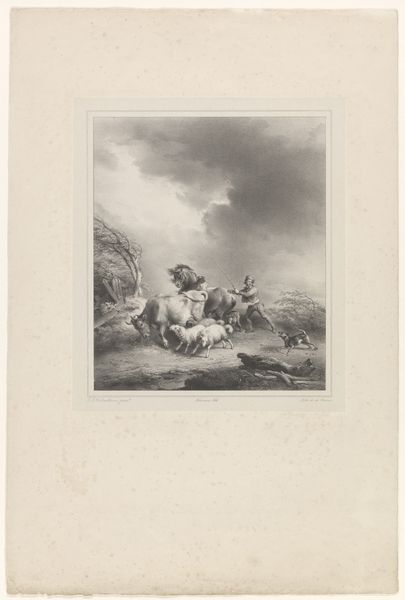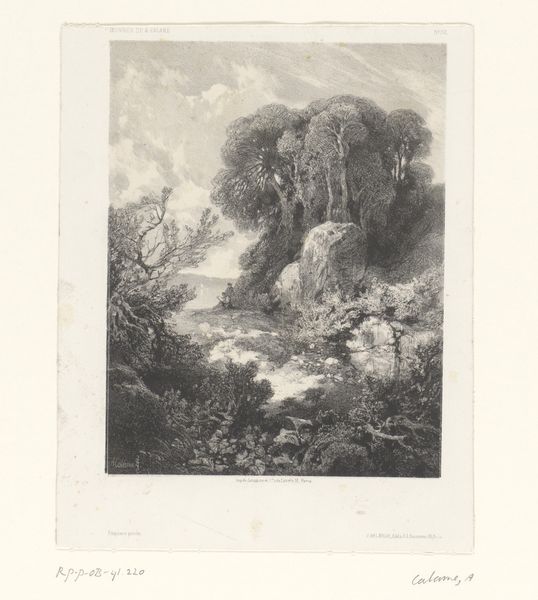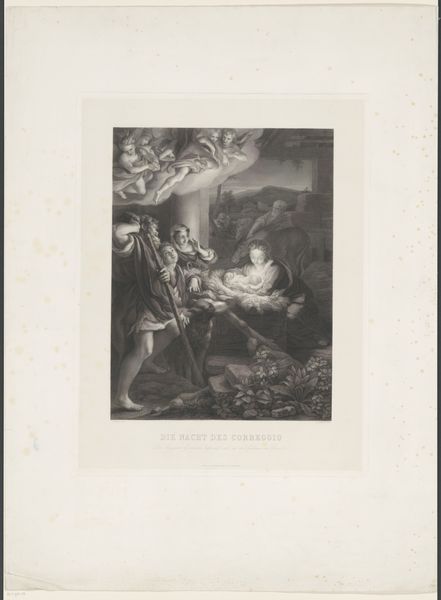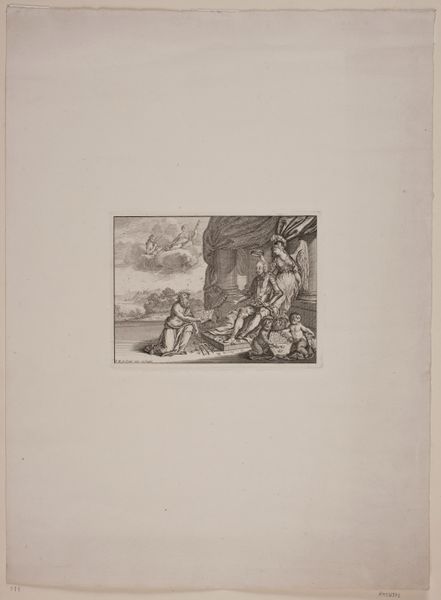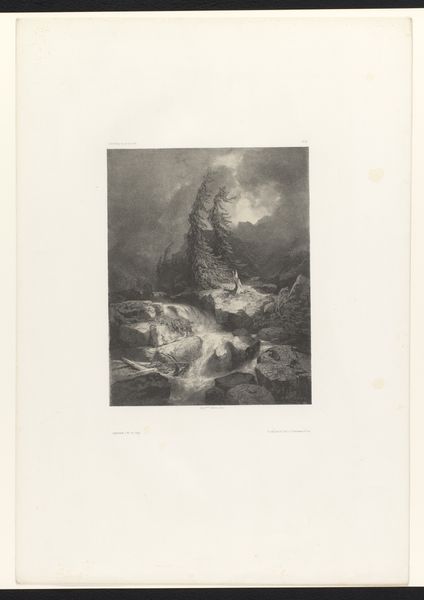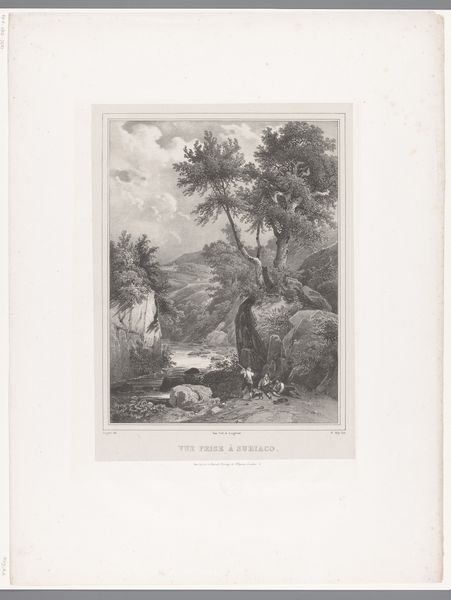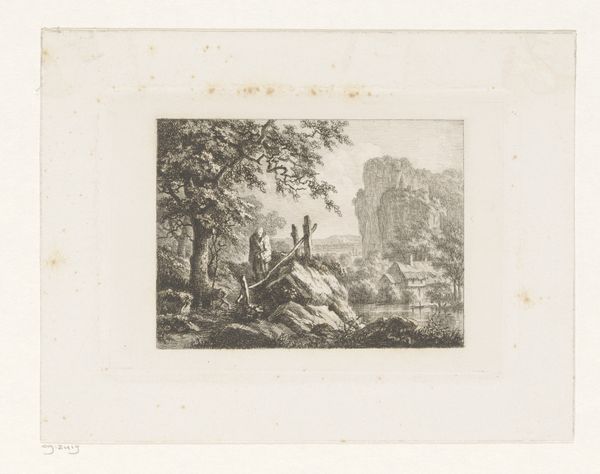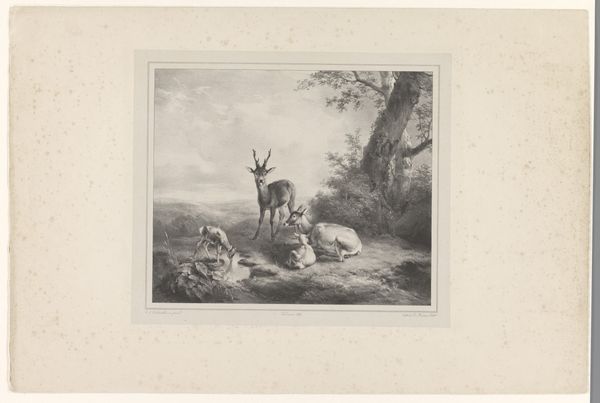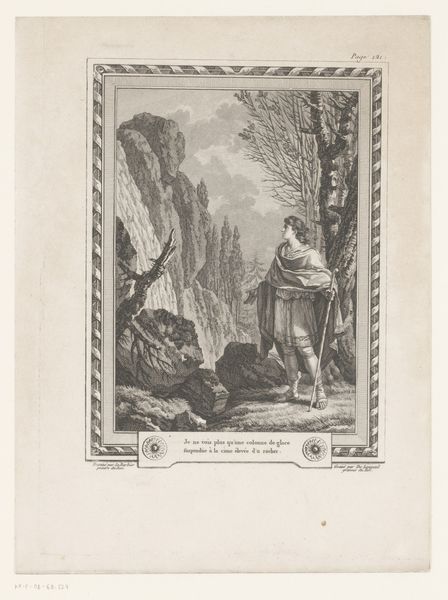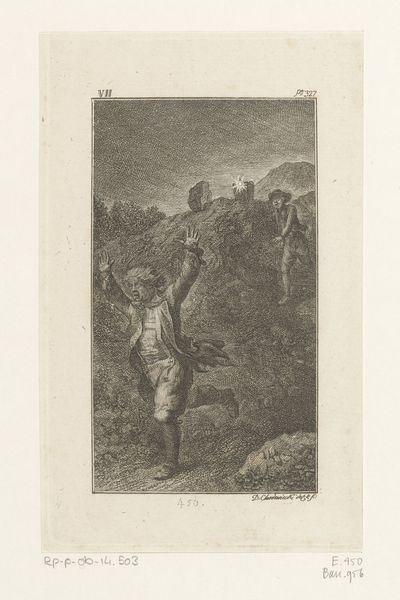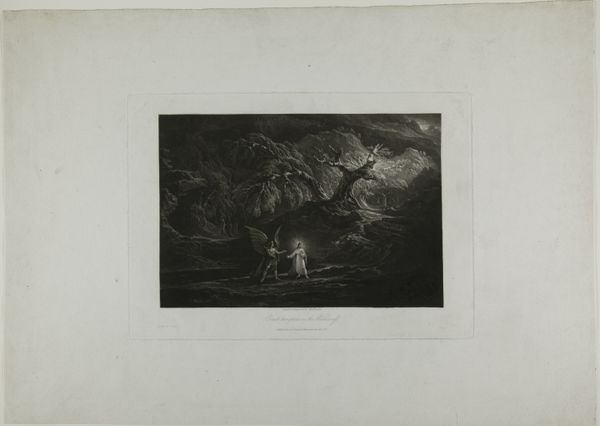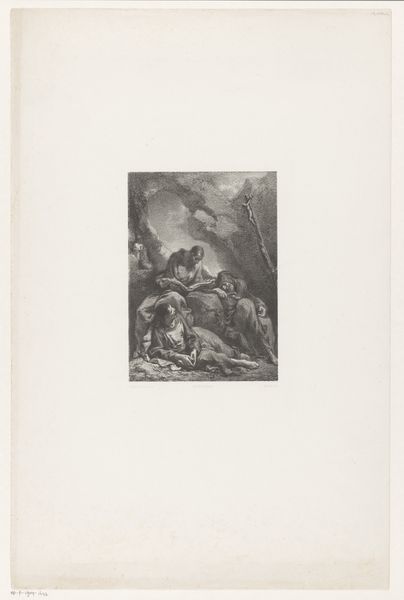
Dimensions: height 510 mm, width 398 mm
Copyright: Rijks Museum: Open Domain
Editor: We're looking at "Military Man in Armour Looking Out Over a Valley," an engraving by Adolphe Mouilleron, dating from 1848 to 1862. It strikes me as quite melancholy – the lone figure, the dramatic landscape. What's your take on it? Curator: This image speaks volumes about the Romantic era’s fascination with the past and the heroic figure. Consider the socio-political context. Following the Napoleonic wars, there was a pervasive sense of longing for a lost age of chivalry and national glory. This print, intended for mass consumption, played into that sentiment, fostering a specific kind of historical imagination. What details strike you as particularly relevant to that romantic ideal? Editor: Well, certainly the armor and the spear – they're powerful symbols of a bygone era. But also the vast landscape seems to dwarf the figure, emphasizing the individual against the backdrop of history. Curator: Exactly. And notice how the engraving technique itself lends a certain gravity and distance. The medium contributes to a perception of authenticity, lending legitimacy to its imagery. Do you think this print idealizes war, or something else entirely? Editor: Perhaps it's not glorifying war directly, but rather evoking a sense of noble sacrifice and duty. I’m thinking of how, by disseminating such images, the artist contributes to constructing a specific national identity. Curator: Precisely! Prints like these weren't just aesthetic objects, they were active agents in shaping cultural memory and political ideology. They reinforced and perpetuated ideas about nationhood, heroism, and the role of the individual in history. Editor: I see how understanding the historical context and the medium itself can completely reshape how we interpret the image. It’s not just a picture of a knight; it’s a cultural artifact deeply embedded in the politics of its time. Curator: Indeed. Reflecting on the piece, its presence in the Rijksmuseum shows that national historical narratives are constantly reshaped over time by our cultural institutions.
Comments
No comments
Be the first to comment and join the conversation on the ultimate creative platform.
